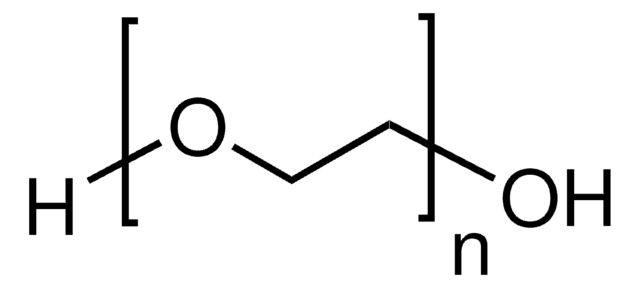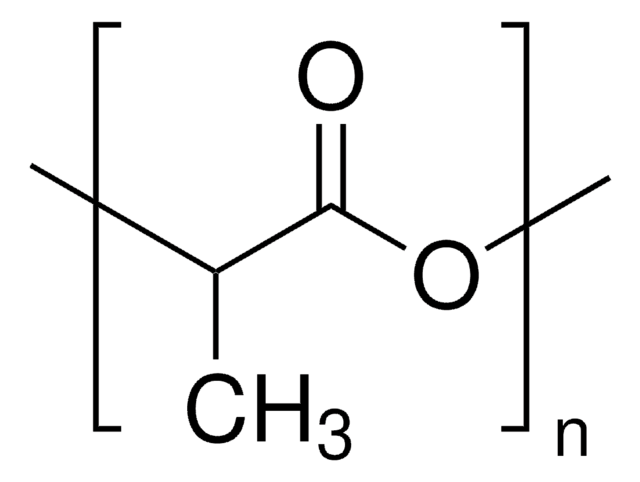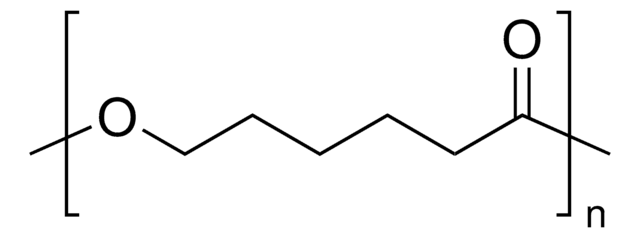推荐产品
产品名称
聚(乙二醇), average Mn 2,050, chips
表单
chips
质量水平
分子量
average Mn 2,050
mp
52-54 °C
Ω端
hydroxyl
α端
hydroxyl
SMILES字符串
C(CO)O
InChI
1S/C2H6O2/c3-1-2-4/h3-4H,1-2H2
InChI key
LYCAIKOWRPUZTN-UHFFFAOYSA-N
正在寻找类似产品? 访问 产品对比指南
应用
- 聚乙二醇衍生物的细胞毒性研究:评估了各种 PEG 衍生物的细胞毒性,该研究对于药物开发和安全性评估领域的化学家很重要(Liu et al., 2017)。
- ExtraPEG:富集细胞外囊泡的聚乙二醇基方法介绍了一种基于PEG的外来体分离方法,该方法对生物医学和临床科学领域的科学家很有用 (Rider et al., 2016)。
其他说明
储存分类代码
11 - Combustible Solids
WGK
WGK 1
闪点(°F)
Not applicable
闪点(°C)
Not applicable
个人防护装备
Eyeshields, Gloves, type N95 (US)
商品
Click chemistry, and the copper(I)-catalyzed azide-alkyne cycloaddition (CuAAC) in particular, is a powerful new synthetic tool in polymer chemistry and material science.
Progress in biotechnology fields such as tissue engineering and drug delivery is accompanied by an increasing demand for diverse functional biomaterials. One class of biomaterials that has been the subject of intense research interest is hydrogels, because they closely mimic the natural environment of cells, both chemically and physically and therefore can be used as support to grow cells. This article specifically discusses poly(ethylene glycol) (PEG) hydrogels, which are good for biological applications because they do not generally elicit an immune response. PEGs offer a readily available, easy to modify polymer for widespread use in hydrogel fabrication, including 2D and 3D scaffold for tissue culture. The degradable linkages also enable a variety of applications for release of therapeutic agents.
Designing biomaterial scaffolds mimicking complex living tissue structures is crucial for tissue engineering and regenerative medicine advancements.
我们的科学家团队拥有各种研究领域经验,包括生命科学、材料科学、化学合成、色谱、分析及许多其他领域.
联系技术服务部门



